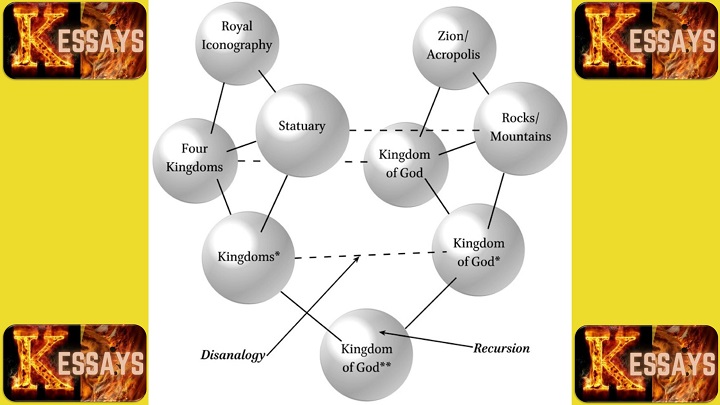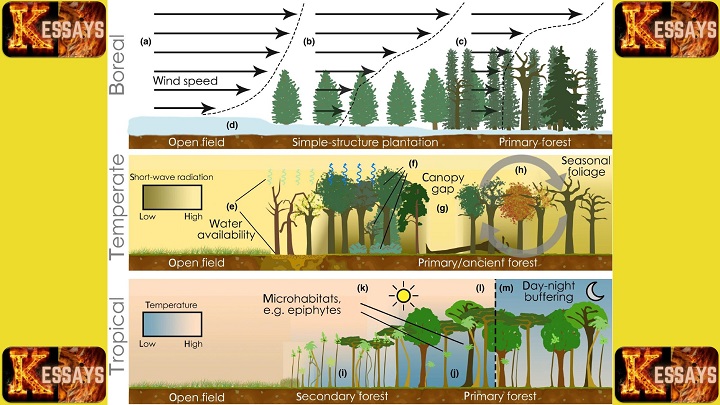Introduction
Apocalyptic literature has long fascinated and captivated readers with its vivid descriptions of catastrophic events, cosmic battles, and the ultimate fate of humanity and the world. This comprehensive article delves into the rich realm of apocalyptic literature, exploring its origins, characteristics, and significant examples. With the keyword "Apocalyptic Literature" at the forefront, we will examine this genre's themes, symbolism, and enduring relevance.
I. Understanding Apocalyptic Literature
Definition and Origins: Apocalyptic literature refers to a genre of ancient texts that emerged during times of crisis and uncertainty. It typically portrays a revelation or disclosure of knowledge about the end times, the fate of the world, and the divine judgment that awaits humanity. The origins of apocalyptic literature can be traced back to ancient Jewish and Christian traditions, although similar themes and motifs can also be found in other ancient cultures.
Elaborating on this section, we can provide a comprehensive list that further explores the characteristics and themes of apocalyptic literature:
- Symbolic Imagery: Apocalyptic literature often employs vivid and elaborate symbolism to convey its messages. Symbolic imagery includes cosmic elements such as stars, sun, moon, and heavenly bodies, representing celestial powers and divine intervention in human affairs. These symbols convey a sense of the grandeur and cosmic significance of the events described in apocalyptic texts.
- Prophetic Visions: Apocalyptic literature frequently includes prophetic visions in which the author or protagonist receives divine revelations about future events. These visions provide insights into the end times, the fate of humanity, and the ultimate judgment. The visions are often presented in symbolic and allegorical forms, requiring interpretation to grasp their meaning.
- Cosmic Battles: A recurring theme in apocalyptic literature is the portrayal of cosmic battles between forces of good and evil. These battles symbolize the ongoing struggle between divine and malevolent powers, with the ultimate triumph of righteousness over wickedness. The imagery of cosmic battles emphasizes the cosmic scope of the events described and underscores the significance of the outcome.
- Divine Messengers and Angels: Apocalyptic literature often features the involvement of divine messengers or angels who serve as intermediaries between the divine realm and humanity. These celestial beings deliver messages, interpret visions, and participate in the cosmic battles. They symbolize the presence of divine intervention and guidance in the unfolding events.
- Unveiling Hidden Knowledge: Apocalyptic literature frequently revolves around the disclosure of hidden knowledge or mysteries that have been concealed from ordinary human understanding. This hidden knowledge often relates to the divine plan, the nature of the end times, and the destiny of humanity. The revelation of this knowledge provides insight and hope amidst the uncertainty and chaos of the apocalyptic narrative.
- Cataclysmic Events and Judgment: Apocalyptic literature revolves around the anticipation of cataclysmic events and the divine judgment that will accompany them. These cataclysmic events can include natural disasters, cosmic upheavals, and the destruction of evil powers. The judgment represents the reckoning of humanity's actions and the establishment of divine justice.
- Hope for a Transformed World: Despite the cataclysmic events and divine judgment, apocalyptic literature often offers a message of hope for a new, transformed world. This hope stems from the belief that the present world, marred by suffering and injustice, will be replaced by a new order characterized by righteousness, peace, and harmony. The vision of a transformed world provides solace and encouragement amidst the trials and tribulations described in the apocalyptic narrative.

By exploring these characteristics and themes, readers can gain a deeper understanding of the nature and significance of apocalyptic literature. The genre's use of symbolic imagery, prophetic visions, cosmic battles, and the unveiling of hidden knowledge creates a captivating narrative that speaks to profound human questions about the ultimate destiny of humanity and the nature of the divine plan.
II. Examples of Apocalyptic Literature
Apocalyptic literature encompasses a range of texts from various cultures and time periods. Elaborating on this section, we can provide a comprehensive list that explores additional examples of apocalyptic literature:
- The Apocalypse of Abraham: This Jewish pseudepigraphic text presents Abraham's visionary journey through the heavens, where he witnesses divine revelations concerning the future fate of humanity. It explores themes of judgment, eschatology, and the role of angels in the cosmic order.
- The War Scroll (1QM): Discovered among the Dead Sea Scrolls, this Jewish apocalyptic text describes a cosmic war between the Sons of Light (the righteous) and the Sons of Darkness (the wicked). It provides insights into the beliefs and practices of the Qumran community and their anticipation of a final eschatological battle.
- The Sibylline Oracles: The Sibylline Oracles, a collection of ancient Greek and Roman texts attributed to the prophetesses known as Sibyls, contain apocalyptic prophecies and visions. They address themes such as the coming judgment, the fate of nations, and the eventual restoration of a golden age.
- The Ascension of Isaiah: This Christian apocalyptic text presents a visionary account of Isaiah's ascent through the heavens, where he witnesses the fall of Satan and the eventual coming of the Messiah. It explores themes of angelology, the nature of evil, and the divine plan for salvation.
- The Book of Enoch: The Book of Enoch is an ancient Jewish text attributed to the biblical figure Enoch. It contains apocalyptic visions and prophecies, including the description of celestial realms, the judgment of the wicked, and the coming of the Messianic kingdom. It touches on themes of fallen angels, the Nephilim, and the final judgment.
- The Apocalypse of Peter: Although not included in the canonical New Testament, the Apocalypse of Peter is an early Christian apocalyptic text. It describes vivid visions of heaven and hell, presenting a detailed depiction of the torments that await sinners and the rewards for the righteous.
- The Eschatological Discourse (Matthew 24, Mark 13, Luke 21): Found in the synoptic Gospels, the Eschatological Discourse contains Jesus' teachings on the signs of the end times, the coming tribulations, and the ultimate return of the Son of Man. It addresses themes of cosmic upheaval, the persecution of believers, and the establishment of God's kingdom.
These examples highlight the diversity of apocalyptic literature, showcasing texts from various religious traditions and cultural contexts. They share common themes of revelation, judgment, and the anticipation of a future cosmic order. Exploring these texts provides valuable insights into the beliefs, hopes, and concerns of ancient societies and their engagement with apocalyptic ideas.
III. Symbolism and Imagery in Apocalyptic Literature
Apocalyptic literature utilizes rich symbolism and imagery to convey its messages and evoke profound meaning. Elaborating on this section, we can explore the use of cosmic symbolism and animal symbolism in apocalyptic literature:
- Cosmic Symbolism: Apocalyptic literature often employs cosmic elements as symbols to represent celestial powers and divine intervention in human affairs. The following examples highlight the significance of cosmic symbolism:
- Stars: Stars are frequently used to symbolize celestial beings or divine messengers. They can represent the angelic host or individuals who shine with spiritual brilliance. Stars also signify guidance, enlightenment, and the cosmic significance of events unfolding in the apocalyptic narrative.
- Sun and Moon: The sun and moon symbolize cosmic forces and divine authority. The sun often represents divine glory, righteousness, and the triumph of good over evil. The moon, on the other hand, is associated with mystical and hidden knowledge, casting a softer, more mysterious light.
- Heavenly Bodies: Other celestial bodies, such as comets, meteor showers, or eclipses, are also employed to convey cosmic events and upheavals. These phenomena serve as harbingers of significant changes and divine intervention.
The use of cosmic symbolism in apocalyptic literature enhances the grandeur, transcendence, and cosmic significance of the events described. It emphasizes the belief that the unfolding events transcend earthly boundaries and involve divine forces beyond human comprehension.
- Animal Symbolism: Animals play a prominent role in apocalyptic literature as symbols representing various powers and forces. The following examples illustrate the use of animal symbolism:
- Beasts: Beasts with multiple heads or horns often symbolize oppressive empires, tyrannical rulers, or demonic forces. They represent the forces of evil that challenge divine authority and threaten the righteous. Examples include the beasts in the Book of Daniel and the beasts from the sea and earth in the Book of Revelation.
- Lamb: The lamb is a powerful symbol of innocence, purity, and sacrifice. In apocalyptic literature, the lamb represents Christ or the righteous who overcome evil through their purity and willingness to lay down their lives. The lamb symbolizes salvation, redemption, and the ultimate victory of good over evil.
- Dove: The dove is a symbol of peace, harmony, and the presence of the Holy Spirit. In apocalyptic literature, the dove often represents divine intervention, the renewal of the world, and the restoration of harmony after the cataclysmic events.

Animal symbolism in apocalyptic literature provides vivid imagery that evokes emotional and spiritual responses. It conveys complex ideas and contrasts between good and evil, innocence and corruption, and the ultimate triumph of righteousness over wickedness.
By utilizing cosmic and animal symbolism, apocalyptic literature engages readers on a symbolic level, transcending literal interpretations and inviting contemplation of profound concepts and spiritual truths. The symbols and imagery contribute to the poetic and visionary nature of apocalyptic texts, capturing the imagination and conveying deep spiritual insights to the readers.
IV. Enduring Relevance of Apocalyptic Literature
Apocalyptic literature, with its theological depth and evocative imagery, continues to hold enduring relevance in various spheres. Elaborating on this section, we can explore the theological reflection and hope it provides, as well as its literary and cultural influence:
- Theological Reflection and Hope: Apocalyptic literature invites theological reflection by addressing profound questions about the nature of good and evil, the human condition, and the ultimate hope for redemption. It offers a framework for grappling with the complexities of existence, the struggle between opposing forces, and the consequences of human actions. Through its portrayal of divine judgment and the promise of a renewed world, apocalyptic literature encourages readers to contemplate the divine plan for the future and find hope amidst chaos and uncertainty.
- Reflecting on the Nature of Good and Evil: Apocalyptic literature explores the nature of good and evil, often personified as cosmic forces engaged in an ultimate battle. It prompts readers to examine the human capacity for righteousness and wickedness, the consequences of moral choices, and the possibility of redemption.
- Contemplating the Human Condition: Apocalyptic literature delves into the human condition, presenting humanity's vulnerability, struggles, and aspirations. It addresses universal themes such as suffering, injustice, and the yearning for a better world. By grappling with these themes, readers are encouraged to reflect on their own lives and the human quest for meaning, purpose, and transformation.
- Ultimate Hope for Redemption: Apocalyptic literature offers the ultimate hope for redemption and the renewal of all things. It presents a vision of a transformed world, free from suffering, injustice, and evil. This vision serves as a source of hope and inspiration, fostering resilience, perseverance, and faith in the face of challenging circumstances.
- Literary and Cultural Influence: Apocalyptic themes and imagery have permeated various forms of literature, art, and popular culture. The enduring influence of apocalyptic literature can be seen in the following ways:
- Creative Inspiration: Apocalyptic literature has inspired countless works of literature, including modern novels, poems, and plays. Authors draw on its themes and imagery to explore existential questions, societal anxieties, and the human response to crises. Examples include works like "1984" by George Orwell, "Brave New World" by Aldous Huxley, and "The Road" by Cormac McCarthy.
- Contemporary Apocalyptic Narratives: The influence of apocalyptic literature can be seen in contemporary apocalyptic narratives across different media. Movies, television series, and video games often draw on apocalyptic themes, depicting dystopian futures, survival scenarios, and the struggle between good and evil. These narratives continue to captivate audiences and provide a platform for exploring societal concerns and ethical dilemmas.
- Cultural Exploration: Apocalyptic literature offers a lens through which modern societies explore existential questions, societal anxieties, and the potential perils and possibilities of the future. It provides a framework for examining environmental concerns, technological advancements, social upheavals, and moral dilemmas. Apocalyptic narratives enable cultural reflection, critique, and contemplation of the human impact on the world.
In conclusion, apocalyptic literature maintains enduring relevance by providing a theological lens for reflection on the nature of good and evil, the human condition, and the ultimate hope for redemption. Its themes and imagery continue to inspire creative works and influence contemporary apocalyptic narratives in literature, art, and popular culture. Apocalyptic literature invites readers to contemplate profound questions, find hope amidst uncertainty, and explore the potential perils and possibilities of the future.

Conclusion
Apocalyptic literature holds a unique place in ancient texts, offering profound insights into the human quest for understanding the end times, divine judgment, and the hope for a transformed world. With its distinct characteristics, symbolism, and enduring relevance, this genre continues to captivate readers, inviting reflection on the nature of existence and the ultimate destiny of humanity. From the Book of Daniel to the Book of Revelation, apocalyptic literature stands as a testament to the human imagination, theological reflection, and the enduring allure of contemplating the end of the world.
 By exploring these characteristics and themes, readers can gain a deeper understanding of the nature and significance of apocalyptic literature. The genre's use of symbolic imagery, prophetic visions, cosmic battles, and the unveiling of hidden knowledge creates a captivating narrative that speaks to profound human questions about the ultimate destiny of humanity and the nature of the divine plan.
By exploring these characteristics and themes, readers can gain a deeper understanding of the nature and significance of apocalyptic literature. The genre's use of symbolic imagery, prophetic visions, cosmic battles, and the unveiling of hidden knowledge creates a captivating narrative that speaks to profound human questions about the ultimate destiny of humanity and the nature of the divine plan.
 Animal symbolism in apocalyptic literature provides vivid imagery that evokes emotional and spiritual responses. It conveys complex ideas and contrasts between good and evil, innocence and corruption, and the ultimate triumph of righteousness over wickedness.
By utilizing cosmic and animal symbolism, apocalyptic literature engages readers on a symbolic level, transcending literal interpretations and inviting contemplation of profound concepts and spiritual truths. The symbols and imagery contribute to the poetic and visionary nature of apocalyptic texts, capturing the imagination and conveying deep spiritual insights to the readers.
Animal symbolism in apocalyptic literature provides vivid imagery that evokes emotional and spiritual responses. It conveys complex ideas and contrasts between good and evil, innocence and corruption, and the ultimate triumph of righteousness over wickedness.
By utilizing cosmic and animal symbolism, apocalyptic literature engages readers on a symbolic level, transcending literal interpretations and inviting contemplation of profound concepts and spiritual truths. The symbols and imagery contribute to the poetic and visionary nature of apocalyptic texts, capturing the imagination and conveying deep spiritual insights to the readers.

Comments are closed!